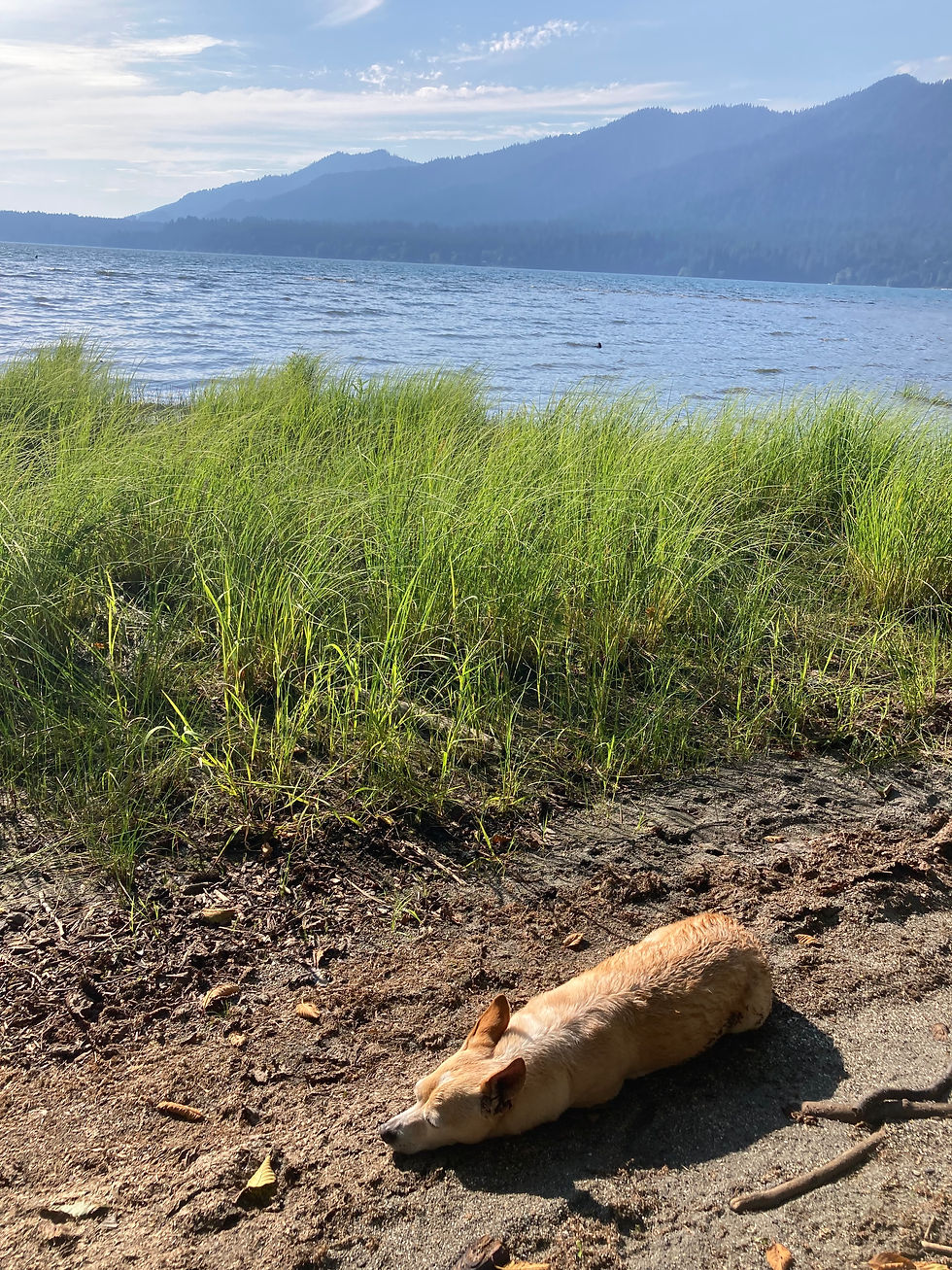Bringing Care Outdoors: Enhancing Quality of Life for Older Adults in Residential Care Communities
- Monica Eastway

- Mar 1, 2023
- 4 min read
Updated: Mar 22, 2023

As a care provider or activity director of a care home, assisted and memory care, you may be wondering how to improve the quality of life of your residents. The answer may lie in providing them with more access to outdoor spaces.
Research has shown that spending time outdoors can have significant health benefits for older adults living in care homes, including improved mood, wellbeing, quality of life, sleep, and reduced use of medication.
Access to green spaces and nature can also provide sensory stimulation, and opportunities for exercise, and facilitate social interactions.
Unfortunately, there are significant barriers to outdoor access for care home residents, including general design problems and low adherence to outdoor interventions.
A study analyzed qualitative or mixed methods studies that reported on the barriers and enablers affecting nursing home residents' use of outdoor space, as perceived by residents, family members, and staff.
The study included 24 studies, and key findings were related to the design of outdoor areas, safety concerns and staffing issues, weather and seasons, design of the main building, and social activities.

The review suggests that providing gardens with seasonal plants and interactive features, weather-protected seating, accessible doors, planned social activities, and appropriate clothing are essential to facilitate nursing home residents' access to the outdoors.
Additionally, addressing perceptions of safety as a barrier is crucial, and incorporating the recommendations in this review may increase outdoor space use and improve the quality of life of residential care home residents.
Design of the outdoor area was found to be the most frequently mentioned main barrier or enabler, particularly garden greenery and features, pathways and surfaces, and concerns about staffing and safety.
Providing green elements such as plants, trees, and flowers, as well as interactive features, promote active and passive use of outdoor spaces.
Resident Autonomy
After construction of a new enabling garden (designed to enhance access) at their nursing home, one staff member stated: "Some of the residents can come out here and come and go as they please. They have their freedom back."
(Raske, 2010)
Safe outdoor mobility was frequently discussed, including adequate pathways, appropriate lighting, and handrails.
Doors and Thresholds
"I don't go out as much as I would like, because I can't handle the doors." - Resident
(Rodiek, Lee, & Nejati, 2014)
"There is something that I think a lot of us talk about missing is the freedom to be outside. At present here, all of our doors are locked except that front one […] I know we need the security but we need something to be done where, you know, we're not locked in." - Resident
(Rodiek et al., 2014)
Seating placement, size, comfort, and maintenance were important to residents' outdoor use.
"There are chairs out there, but not as comfortable." Resident
(Durvasula et al., 2010)
For residents with dementia, outdoor spaces designed to be familiar, domestic, and normal are essential, providing ease of wayfinding, removing physical barriers in the garden, providing formal activity programs and sensory stimulation.
Concerns about the safety of residents using outdoor spaces unsupervised were expressed by staff, family, and residents, preferring a building layout where residents were visible to staff from inside the building when outdoors.
"I don't think they [facility staff] want us to go outside … it just wouldn't be safe…" - This resident believed she could not go outdoors alone.
(Reynolds & Rowles, 2011)
When asked what are the barriers to sun exposure/going outdoors, residents responded:
"Rely on others to go out (and) staff are too busy."
"Need help with mobility. It's short staffed. I wish someone would push me outdoors."
(Durvasula et al., 2010
Social Activities
"Sometimes she talks and we have no idea what she is talking about. But if I can get her to talk about a plant or flower, I can understand what she is saying. At least we are communicating somehow." - Family Member
(Raske, 2010)
"When I come to visit, we walk out into the garden and he tells me what everything is." -Family Member
(Raske, 2010)
"…seeing activity beyond the facility provides a feeling that … there's a world beyond the walls!" - Resident
(Reynolds & Rowles, 2011)
Experiencing Weather and Seasons
"And just being able to feel whether it's warm or cold, or the wind tousling one's hair and all that, I think it's important" - Family Member
(Bengtsson & Carlsson, 2013)

The study highlighted the need to incorporate plants and animals into residential care homes, increase staff confidence in residents' independent access to and use of outdoor areas, and provide safe, familiar, and comfortable outdoor spaces that meet the residents' needs.
By Bringing Care Outdoors, we can help residents, and their carers,
live happier, healthier lives.
Curious to learn Simple yet Profound, Evidence-Based Ways to Bring Care Outdoors?
Research:
Bengtsson, A., & Carlsson, G. (2006). Outdoor environments at three nursing homes: Focus group interviews with staff. Journal of Housing for the Elderly, 19(3-4), 49-69.
Durvasula, S., Kok, C., Sambrook, P. N., Cumming, R. G., Lord, S. R., March, L. M., ... & Cameron, I. D. (2010). Sunlight and health: attitudes of older people living in intermediate care facilities in southern Australia. Archives of gerontology and geriatrics, 51(3), e94-e99.
Raske, M. (2010). Nursing home quality of life: Study of an enabling garden. Journal of Gerontological Social Work, 53(4), 336-351.
Reynolds, L. (2011). The perceived value of nature and use of gardens by older adults living in residential care. University of Kentucky.
Rodiek, S. (2006). Resident perceptions of physical environment features that influence outdoor usage at assisted living facilities. Journal of Housing for the Elderly, 19(3-4), 95-107.
van den Berg, M. E., Winsall, M., Dyer, S. M., Breen, F., Gresham, M., & Crotty, M. (2020). Understanding the barriers and enablers to using outdoor spaces in nursing homes: A systematic review. The gerontologist, 60(4), e254-e269.







